Perspectives on Our Past
In this issue I highlight three of our most famous Sigma Nu brothers. My idea for this column was born while working in the Richard R. Fletcher Honor Library, easily the most striking room at our headquarters. It houses several collections of books, including an extensive collection by Sigma Nu authors.
THE BASEBALL PLAYER
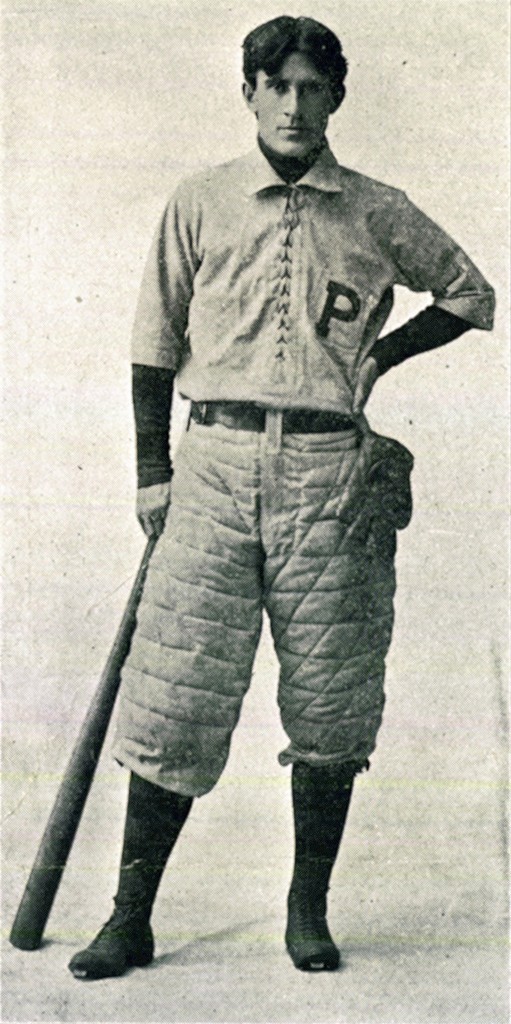
Zane Grey in his University of Pennsyvania baseball uniform.
Zane Grey was born on January 31, 1872 in Zanesville, Ohio, a town named after his great-grandfather, its founder. While he was born Pearl Zane Gray, his father later changed the spelling of the family’s last name to “Grey.” The basis for his first name is not clear; however, one story is that Queen Victoria during her mourning period for Prince Albert was said to have worn “pearl gray” colored clothes, and his mom liked the word combination. He used the name Pearl through college but dropped it when he turned seriously to writing.
His father -- a farmer and backwoodsmen -- studied to become a dentist and wanted his son to follow in his footsteps, feeling dentistry was a very practical way to earn a living. At 15, Zane wrote his first story on pieces of wallpaper; but when his father found it, he immediately tore it up not wanting his son to become a writer.
Zane grew up in the great outdoors, loving baseball, fishing and hunting. He was a natural pitcher and hitter whom the University of Pennsylvania recruited and awarded a scholarship to play.
Sigma Nu
By nature a shy and unsocial young man, he became fast friends with the other players on the team. They encouraged him to join a newly chartered fraternity; and in the fall of 1894, Beta Rho Chapter at Penn initiated the future novelist. He was initiate number 14.
In a 1936 discussion with the editor of the Delta, Grey said, “Not until I achieved the Varsity baseball team did I have any acquaintance in college, let alone friends. Then the bitter loneliness of my college days seemed to change. Danny Coogan, the great Varsity catcher, made me a member of the Sigma Nu Fraternity; Al Bull, the center on the famous football team that beat Yale and Princeton and Harvard, selected me for a roommate. It was in rooms occupied by Al Bull, Zane Grey and other members of Beta Rho that chapter meetings were held.”
Zane was not a good student being more interested in baseball than studying. His dream of playing professionally after graduation ended when a rule change foiled his plans. Officials moved the pitching mound ten yards further from the batter’s box to reduce the dominant pitching of Cy Young. When the effectiveness of Zane’s pitching declined with that additional distance, it became evident he would not play professional ball; however, he played for several years in the minor leagues during the summer, in the evening, and on weekends.
After Graduation
When his professional baseball dreams ended, he succumbed to his father’s wishes and graduated with a degree in dentistry, set up a dental office in New York City, and practiced for over a decade. However, his thoughts were constantly on the outdoors instead of drilling and extracting teeth. He bought a weekend house in Lackawaxen, Pennsylvania, and was often there on the weekends hunting and fishing. It was while canoeing on a local river in 1900 he met his future wife, Lina “Dolly” Roth. She was studying to be a schoolteacher and five years later, in 1905, they married.
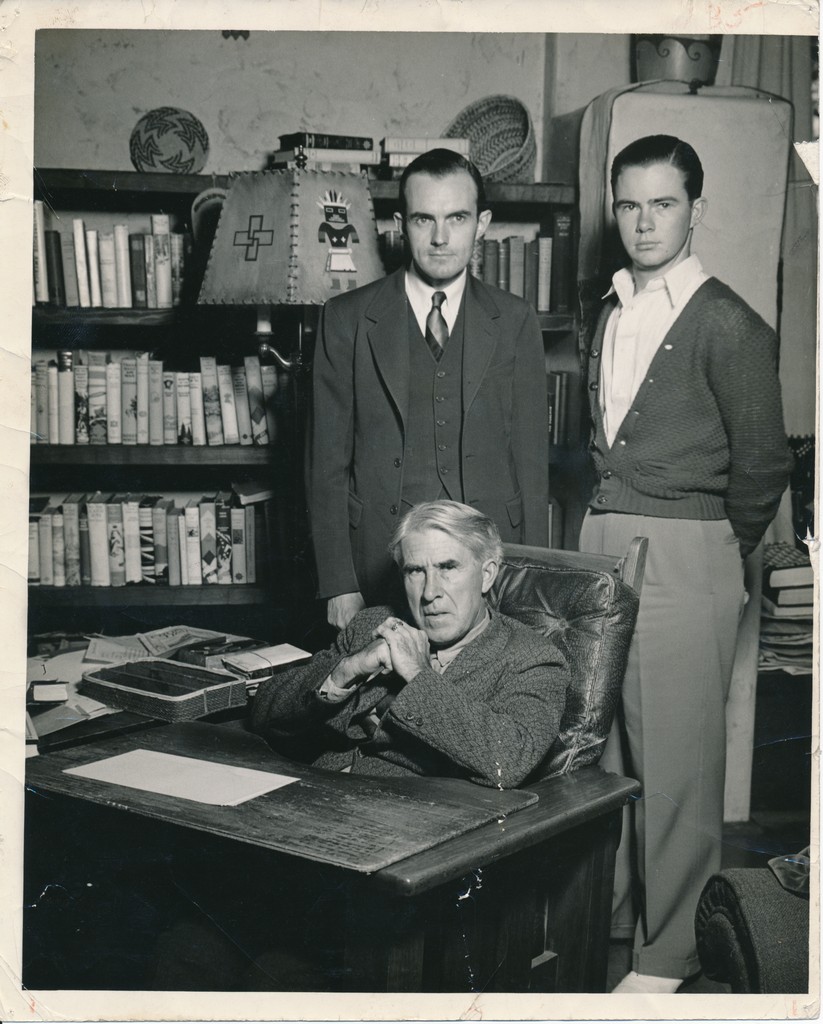
Zane Grey (Pennsylvania), seated at his "writing board" on October 18, 1936 with the Editor of The Delta, Charles Edward Thomas (Sewanee), standing at the left, and Loren Grey (Southern California) on the right.
Before their marriage, he decided to try writing, another of his passions. In 1902, his first magazine article was published about a fishing trip that he and his brother had taken. That encouraged him to write his first novel, Betty Zane, a story about an ancestor who had bravely helped defend a frontier fort. Although he submitted it to publishers, it was rejected. Disappointed and depressed, he finally decided to self-publish it, which he did in 1903. Subsequently, he wrote five more novels, but his would-be publishers rejected all as well.
Dolly was from a family of physicians and had some financial support. She encouraged him to quit his dental practice and spend his time writing full time instead. In 1907, he had a breakthrough when he traveled west with C. J. “Buffalo” Jones. Jones was a Wild West showman and explorer. In his first trip west, Zane experienced adventures, situations, landscapes, and people who were unfamiliar to him. He saw the Grand Canyon and the beauty of the west, he met Indian guides and Cowboys, he tracked mountain lions, and listened to tales around campfires. He came home filled with ideas and subjects to use in his writings.
Based on that trip, he wrote a novel that was accepted and published by one of the large publishing houses. There was no stopping him after that success, and Harper & Brothers released many more of his books in the years to follow. Between 1917 and 1926, he was on the top ten bestseller list nine times.
Hollywood Beckons
In 1916, he started his connection with Hollywood when a studio purchased the rights to Riders of the Purple Sage. To be closer to the film studios, he moved his family to California; however, he chafed at the studio’s adaptations and took control by forming his own motion picture studio. He made seven films before selling his studio to a partner of Paramount Pictures’ founder.
Eventually his books would be adapted into over 112 films, many of them in the 1930’s. During that period, many actors -- like Gary Cooper, Randolph Scott, William Powell, Wallace Beery, Buster Crabbe, Shirley Temple and Fay Wray -- got their start in his films.
Television studios also developed his books into two early television episodes and a series – Dick Powell’s Zane Grey Theatre, which ran for 145 episodes. Adaptations of his books were also the basis in the 1950’s for two very popular television series – The Lone Ranger and Sergeant Preston of the Yukon.
Family
Dolly and Zane Grey had three children, two sons, Romer and Loren, and a daughter, Betty. In 1935, his son Loren Grey was also initiated into Sigma Nu by our Epsilon Omicron Chapter at the University of Southern California. Zane was proud of his son’s achievement and in the 1936 interview with the Delta stated, “I gave him a jeweled pin last year when he was initiated, and now his girl wears it.”
Zane Grey died of heart failure on October 23, 1939 at his home in Altadena, California. He was 67 years old and was one of the first millionaire writers. At the time of his death, he was considered “the greatest selling author of all time,” and only the Bible and the Boy Scout Handbook exceeded him in sales. In 1982, Sigma Nu inducted him into its Hall of Fame.
THE PROFESSOR
The second brother was a university professor who left a legacy as a teacher, a well-known writer, and an ardent conservationist. Of him, author Edward Abbey said that Wallace Stegner was “the only living American worthy of the Nobel,” and Evelyn Boswell deemed him the “Dean of Western Writers.”
Wallace Earle Stegner was born on his grandfather’s farm in Lake Mills, Iowa, on February 18, 1909 -- the second son of George and Hilda Stegner. From bootlegging to gambling, his father was an unsuccessful fortune hunter, always looking for ways to make a buck. His on-going quest meant the family was always on the move looking for better opportunities elsewhere. Stegner said they lived in 20 places in eight states and Canada while he was growing up. He was a thin, sickly youth whose father verbally and emotionally abused and berated him; however, his mother, always protective of her boys, made them feel loved despite their father’s constant harangues.
Finishing high school in Salt Lake City, Stegner enrolled at the University of Utah. Initially he wanted to be an economist, but he quickly learned that his real interest and gift was writing. Our Epsilon Lambda Chapter at Utah initiated him on January 22, 1928. He played basketball and tennis at the University and served as Reporter for the Chapter. In his college days, he entered a short story contest sponsored by the Salt Lake Telegram newspaper and won first prize. In announcing the winner, “the judges praised Mr. Stegner’s story as remarkably reflecting the psychology and conversation of youth.”
Teaching
In 1930, he obtained his Bachelor of Arts Degree from Utah. Upon graduation he took a teaching assistant job at the University of Iowa. From Iowa, he went on to teach at Augustana College, Utah, Wisconsin, Harvard, and finally at Stanford.
He came to Stanford in 1945 as a Professor of English and in 1947 initiated the highly successful Creative Writing Program, of which he served as the director. This program made it possible for many of the most talented young writers in America to develop their skills. Alumni include Larry McMurtry, Scott Turow, Tobias Wolff, Wendell Berry, Harriet Doerr, and Ken Kesey. He retired from teaching in 1971, but continued to write for the rest of his life.
Writing
His big break in writing came in 1937, when his first novella, Remembering Laughter, won a Little Brown publishing company prize of $2,500. In those days, still in the throes of the Great Depression, this was a huge amount.
After writing several novels in the late 1930’s and early 1940’s, editors of Look magazine asked him to write a series of articles about the racial problems existing in America. Based on his upbringing in the West, he wasn’t sure he was the best qualified to write about it; but he tackled the subject nevertheless. The editors eventually toned down his articles and printed them as one very bowdlerized article - not at all what he wanted. However, Look’s editors later agreed to publish a book of all his articles titled One Nation. The book won a Houghton-Mifflin Life-in-American Award and the Anisfield-Wolf Book Award in 1945.
During his writing career, he published 13 novels, 16 non-fiction works, and six collections of short stories, as well as numerous articles and prefaces for other authors. In 1972, he won the Pulitzer Prize for Fiction for his novel Angle of Repose. In 1977 he received the National Book Award for Fiction for his novel The Spectator Bird. In 1980 he won the Los Angeles Times Robert Kirsch Award for career contributions by a western writer.
In 1944, Sinclair Lewis said that he was “one of the most important novelists in America.” According to James Hepworth, “Stegner was one of the America West’s preeminent historians and arguably the most important of its novelists.”
Conservationist
Stegner was passionate about the West where he grew up and wanted to preserve it for future generations. The treatment of the wilderness areas by the government, developers, and ranchers disturbed him greatly. He once said, “I grew up careless, like any frontier boy. I grew up killing things. I don’t kill anymore, and I have been getting less and less careless about country…So if I have any cause that itches me more than any other, it is conservation.”
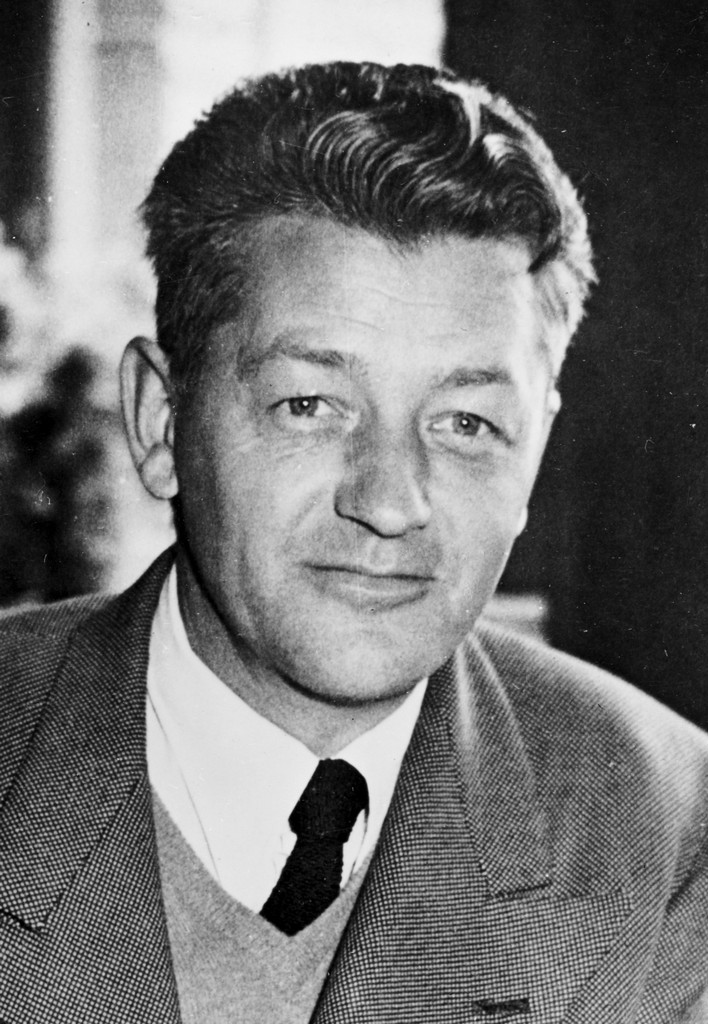
Wallace Stegner (Utah).
In 1955, he edited the book This Is Dinosaur: Echo Park Country and Its Magic Rivers, which helped persuade the government not to build dams to destroy Echo Park and Split Mountain Canyon on the Utah/Colorado border. In 1960, he wrote an eight-page letter, which may have done more to save the remaining American wilderness than any other single document. It was called the Wilderness Letter and is a reasoned articulation of why the wilderness is so important to human beings and us as Americans. It was significant in the passage of the Wilderness Act of 1964.
When Stewart Udall became Secretary of the Interior in the Kennedy Administration, he talked Stegner into serving as a Special Assistant to Udall dealing with conservation matters. Stegner, however, chaffed at the bureaucracy and stayed only a short time. He later served on the Board of the Sierra Club and chaired the Advisory Board for National Parks, Historical Sites, Buildings and Monuments.
Family
Throughout his life, he gained tremendous support from his wife, Mary. They married in 1934 and had one son, Stuart Page Stegner. He said his wife was always willing to tell him the truth about his writing, no matter how difficult that was.
James Hepworth, in an interview, asked Stegner about death and whether one life is ever enough. Stegner said, “I would like to think that one life is enough, and that when I see it coming to an end I can meet the darkness with resignation and perhaps acceptance. I have been lucky. I came from nowhere, and had no reason to expect as much from this one life as I have got. I owe God a death, and the earth a pound or so of chemical. Now let’s see if I can remember that when the time comes.”
For Wallace Stegner, that time came on April 13, 1993 at a hospital in Santa Fe, New Mexico. He had been severely injured in a car crash 16 days before and never recovered from his injuries. He was 84 years old. He died a rare individual in his field - both a well-known writer and a famous teacher of writing.
THE “MURDERER”
The final brother tried his hand at many jobs after college: in an automobile factory, a lumber camp, a dance orchestra and as a journalist before moving to Hollywood where his rise to fame began. Subsequently, he became best known for his “murders and other crimes.”
George Harmon Coxe was born in Olean, New York, on April 23rd, 1901. In 1919, he entered Purdue University planning to become a mechanical engineer. Our Beta Zeta Chapter at Purdue recruited and initiated him into Sigma Nu on March 27, 1920.
One year at Purdue cured him of becoming an engineer, and he transferred to Cornell University where he pursued a liberal arts program. Upon entering Cornell, he affiliated with our Gamma Theta Chapter. Unfortunately, he found pursuing a liberal arts degree not to his taste either, and left after a year.
His most poignant memory of his time at Beta Zeta was that he was the first guy out there to play the tenor banjo. This instrument, a banjo with a shorter neck, was just becoming popular in dance bands because its sound fit well with other instruments at the time.
In a letter to The Delta editor in 1943 he stated, “…being a Freshman, I played when the Brothers said, “Play,” and liked it. Unfortunately, I could also sing a passable barbershop baritone and there was a pretty good trio in the house …and I wish I had a buck for every time those guys hauled me out of bed and made me come shivering down the stairs to round out the quartet and keep singing until they got ready to go to bed. Luckily at Cornell there was no trio.”
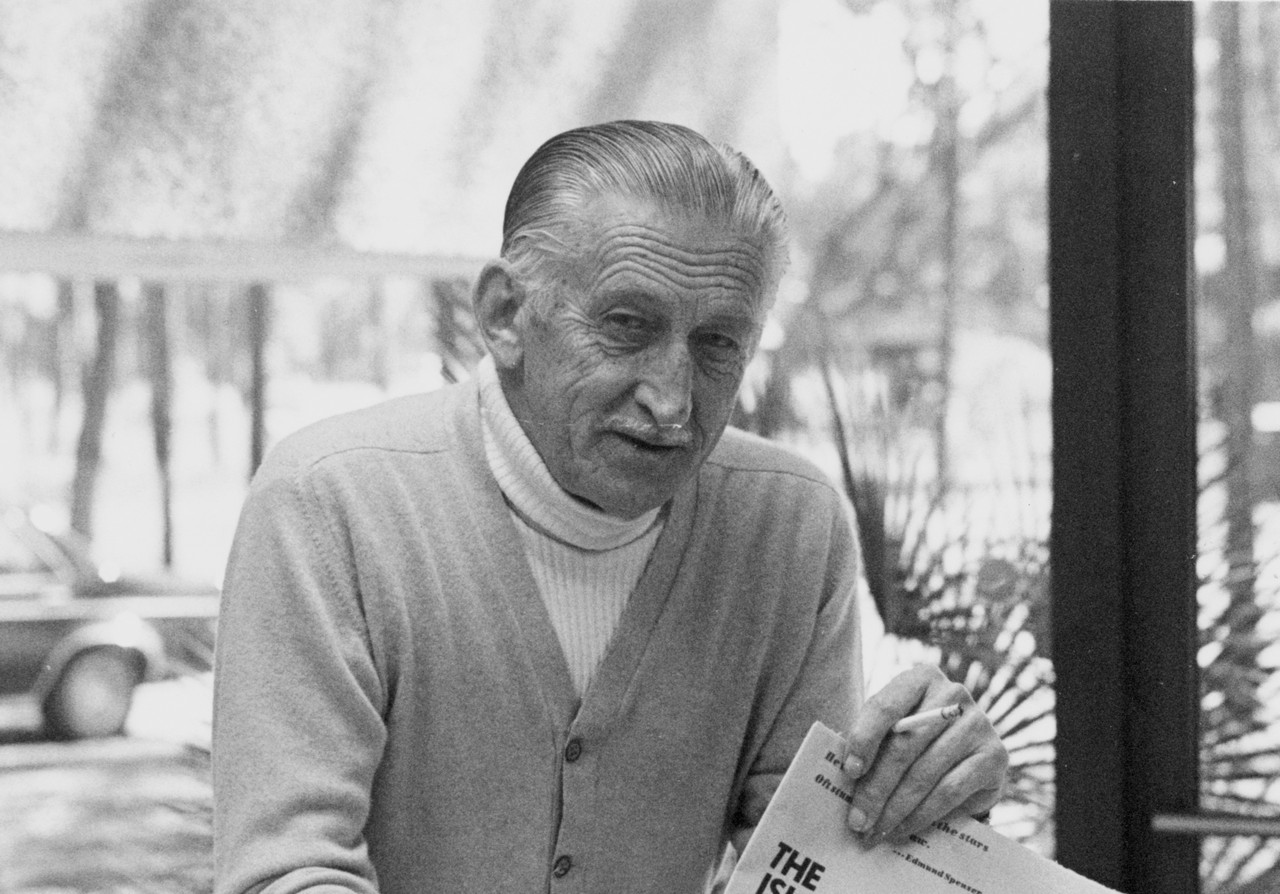
George Harmon Coxe (Purdue/Cornell)
After dropping out of Cornell, he knocked around at odd jobs until starting his career as a journalist, working for newspapers in California, Florida and New York. After five years of newspaper journalism, he took a job for a New England advertising firm. His stint there lasted five years, during which time he met his future wife, Elizabeth Fowler. They were married in 1929 and had two children, a daughter Janet and a son George.
Hollywood and Fame
In the early 1930’s, he decided that writing was his true love and he moved his family out to Hollywood, where he was under contract to the Metro-Goldwyn-Mayer (MGM) film studio. He supplied stories, but the studio produced few of them and after two years he left. He began free-lance writing, which he would continue for most of his life.
He started out by writing stories for nickel and dime pulp fiction publications. Initially he wrote in many genres including romance and adventure stories, but he mostly enjoyed writing crime fiction and made it his trademark. He sold his short stories to the pulp mystery magazines before he started writing novels. He was said to have “strong complex plots, and tough but likable heroes.”
His most well-known protagonist was the newspaper photographer Jack “Flashgun” Casey. Casey first appeared in the March, 1934 issue of Black Mask magazine. He was the crime photographer for the Morning Express newspaper and solved numerous murders and crimes in Coxe’s stories.
Films, Radio and Television
Hollywood made two films of his Flashgun Casey stories: Women Are Trouble (1936) and Here’s Flash Casey (1938). After appearing in the two films, Casey was given further life on CBS radio. The show ran from July 1943 through November 1950.
CBS replaced the radio show in April 1951 with a series on early television starring Darrin McGavin. It ran just over a year until June 1952. Subsequently, the radio show was relaunched in April 1954 and ran until April 1955.
In the 1940’s, a Marvel comic series was also run that featured Casey.
Novels
Between 1937 and 1975, Coxe authored 63 books. During that time, you could go into almost any public library and find many of his books on the shelves; he was that popular a mystery writer. In addition to Jack “Flashgun” Casey, other protagonists included Kent Murdock, again a newspaper photographer, and Jack Fenner, a private eye.
In 1964, The Mystery Writers of America awarded Coxe a Grand Master Award in recognition of his significant work. This Award is for lifetime achievement and consistent quality of work and is considered one of the highest honors a mystery writer can earn. Other notable recipients include Agatha Christie, Ellery Queen, Alfred Hitchcock, John le Carré, Mickey Spillane, and Stephen King.
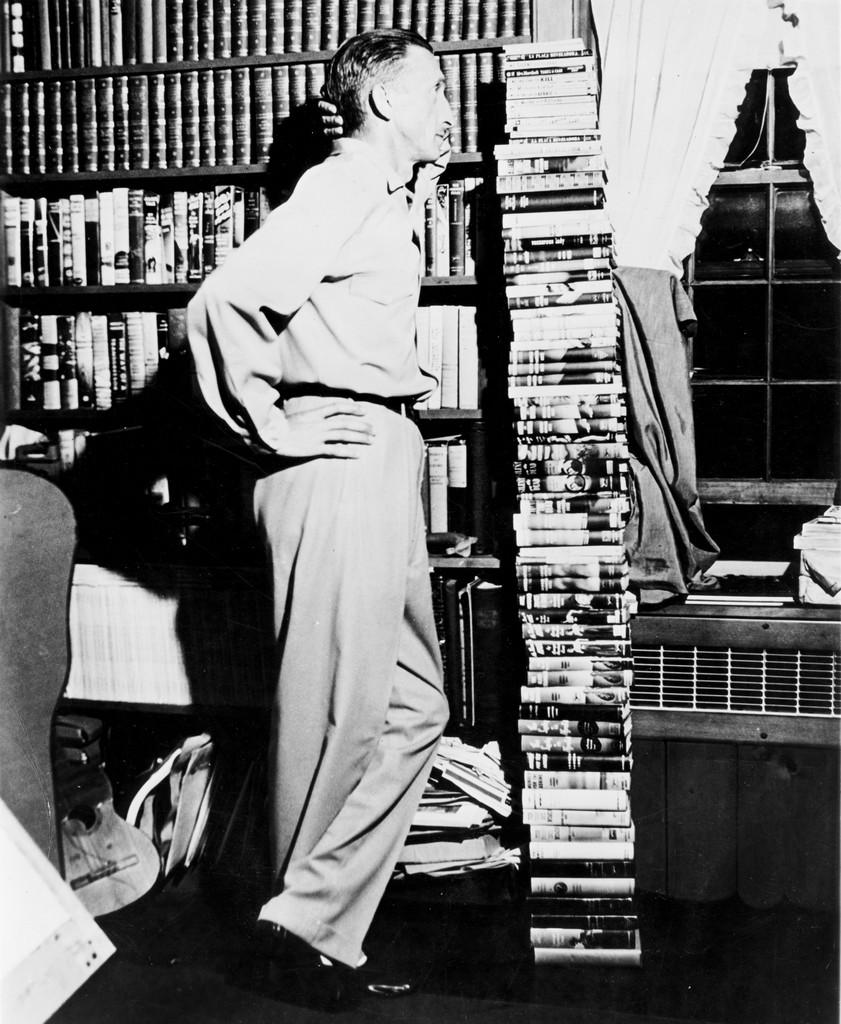
George Harmon Coxe (Purdue/Cornell) next to a stack of his novels.
He was well respected by other mystery writers as evidenced by a quote from Erle Stanley Gardner (famed for his Perry Mason series), “George Harmon Coxe is a first magnitude star in the mystery field. His work is uniformly entertaining, gripping and exciting. He is one of the few authors that have the knack of hitting a fast pace, keeping it up from chapter to chapter and book to book.”
Coxe died on January 31, 1984 at the age of 82 years in Old Lyme, Connecticut. His career as an author spanned over 50 years, from 1922 to 1975. His ability to write realistic crime novels featuring murder, mayhem and a fascinating array of charters made him one of the best at this genre of fiction. We are fortunate to have all 63 of his books in our Sigma Nu Authors Collection at headquarters.
CONCLUSION
All of these authors were prolific writers. In our entire collection of Sigma Nu Authors, these brothers are easily the top three by the number of published works:
- Zane Grey – 102 novels, books on fishing and children’s stories
- George Harmon Coxe – 63 novels
- Wallace Stegner – 35 novels, short story collections and non-fiction books
This summary of books published doesn’t take into account the many, many articles, short stories, book reviews and prefaces written by these men. Based on the volume of literary output and awards received, they certainly qualify as our top literary giants.